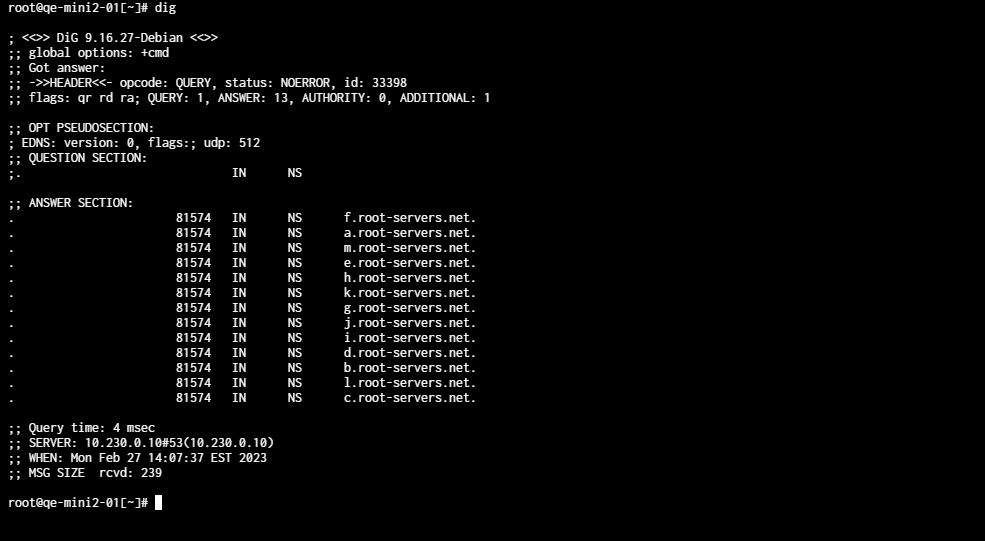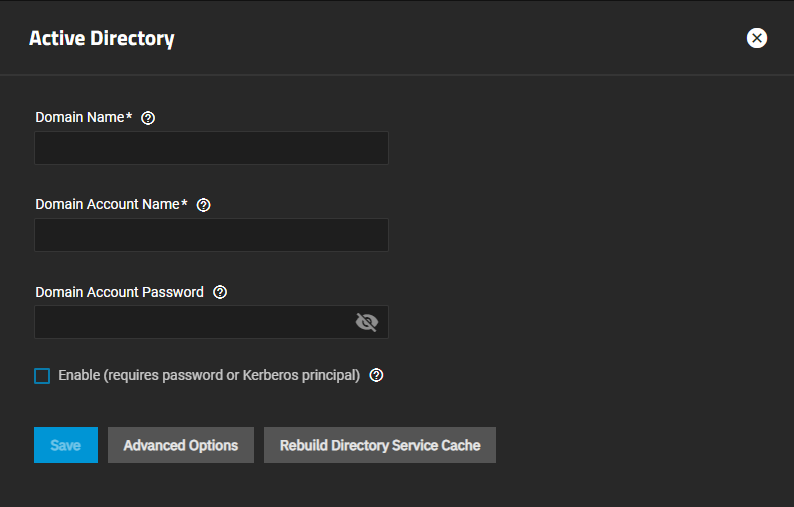TrueNAS SCALE Documentation Archive
This content follows the TrueNAS SCALE 24.04 (Dragonfish) releases. Archival documentation is provided for reference only and not actively maintained.
Use the Product and Version selectors above to view content specific to different TrueNAS software or major version.
Configuring Active Directory
5 minute read.
The Active Directory (AD) service shares resources in a Windows network. AD provides authentication and authorization services for the users in a network, eliminating the need to recreate the user accounts on TrueNAS.
When joined to an AD domain, you can use domain users and groups in local ACLs on files and directories. You can also set up shares to act as a file server.
Joining an AD domain also configures the Privileged Access Manager (PAM) to let domain users log on via SSH or authenticate to local services.
Users can configure AD services on Windows or Unix-like operating systems using Samba version 4.
To configure an AD connection, you must know the AD controller domain and the AD system account credentials.
Users can take a few steps before configuring Active Directory (AD) to ensure the connection process goes smoothly.
Obtain the AD admin account name and password.
After taking these actions, you can connect to the Active Directory domain.
To confirm that name resolution is functioning, you can use the Shell and issue a ping command and a command to check network SRV records and verify DNS resolution.
To use dig to verify name resolution and return DNS information:
Go to System Settings > Shell and type
digto check the connection to the AD domain controller. The domain controller manages or restricts access to domain resources by authenticating user identity from one domain to the other through login credentials, and it prevents unauthorized access to these resources. The domain controller applies security policies to request-for-access domain resources.
When TrueNAS sends and receives packets without loss, the connection is verified.
Press Ctrl + C to cancel the
ping.
Also using Shell, check the network SRV records and verify DNS resolution enter command host -t srv <_ldap._tcp.domainname.com> where <_ldap._tcp.domainname.com> is the domain name for the AD domain controller.
Active Directory relies on the time-sensitive Kerberos protocol. TrueNAS adds the AD domain controller with the PDC Emulator FSMO Role as the preferred NTP server during the domain join process. If your environment requires something different, go to System Settings > General to add or edit a server in the NTP Servers window.
Keep the local system time sync within five (5) minutes of the AD domain controller time in a default AD environment.
Use an external time source when configuring a virtualized domain controller. TrueNAS generates alerts if the system time gets out-of-sync with the AD domain controller time.
TrueNAS has a few options to ensure both systems are synchronized:
- Go to System Settings > General and click Settings in the Localization window to select the Timezone that matches location of the AD domain controller.

- Set either local time or universal time in the system BIOS.
To connect to Active Directory, in SCALE:
Go to Credentials > Directory Services click Configure Active Directory to open the Active Directory configuration screen.
Enter the domain name for the AD in Domain Name and the account credentials in Domain Account Name and Domain Account Password.
Select Enable to attempt to join the AD domain immediately after saving the configuration. SCALE populates the Kerberos Realm and Kerberos Principal fields on the Advanced Options settings screen.

- Click Save.
TrueNAS offers advanced options for fine-tuning the AD configuration, but the preconfigured defaults are generally suitable.
When the import completes, AD users and groups become available while configuring basic dataset permissions or an ACL with TrueNAS cache enabled (enabled by default).
Joining AD also adds default Kerberos realms and generates a default AD_MACHINE_ACCOUNT keytab. TrueNAS automatically begins using this default keytab and removes any administrator credentials stored in the TrueNAS configuration file.
If the cache becomes out of sync or fewer users than expected are available in the permissions editors, resync it by clicking Settings in the Active Directory window and selecting Rebuild Directory Service Cache.
When creating the entry, enter the TrueNAS hostname in the name field and make sure it matches the information on the Network > Global Configuration screen in the Hostname and NetBIOS fields.
You can disable your AD server connection without deleting your configuration or leaving the AD domain. Click Settings to open the Active Directory settings screen, then select the Enable checkbox to clear it, and click Save to disable SCALE AD service. This returns you to the main Directory Services screen where you see the two main directory services configuration options.
Click Configure Active Directory to open the Active Directory screen with your existing configuration settings. Select Enable again, click Save to reactivate your connection to your AD server.
TrueNAS SCALE requires users to cleanly leave an Active Directory if you want to delete the configuration. To cleanly leave AD, use the Leave Domain button on the Active Directory Advanced Settings screen to remove the AD object. Remove the computer account and associated DNS records from the Active Directory.
If the AD server moves or shuts down without you using Leave Domain, TrueNAS does not remove the AD object, and you have to clean up the Active Directory.



